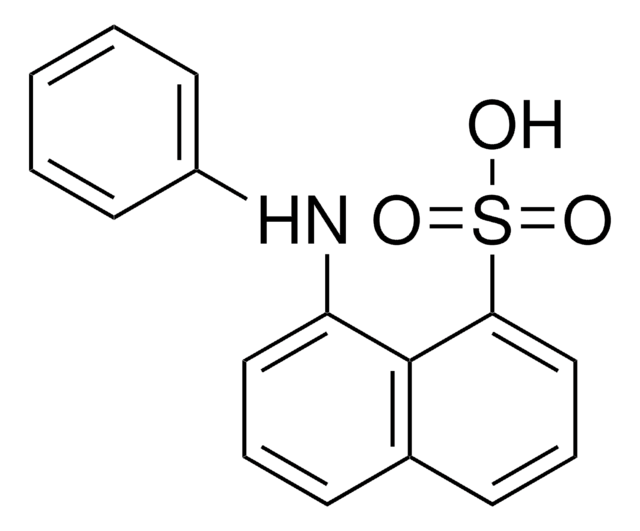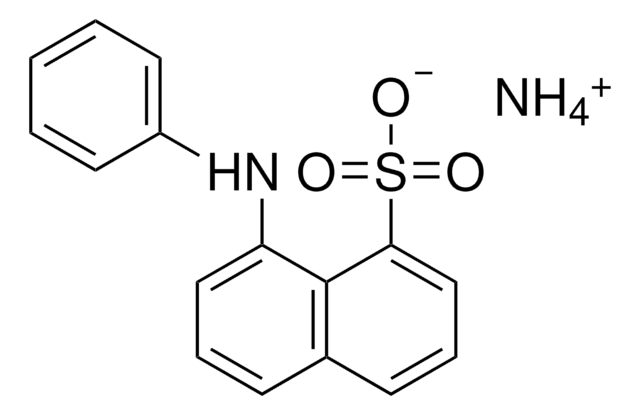72335
9-(2,2-Dicyanovinyl)julolidine
BioReagent, suitable for fluorescence, ≥97.0% (HPLC)
Synonyme(s) :
9-Julolidinylmethylenemalononitrile, DCVJ
About This Item
Produits recommandés
Gamme de produits
BioReagent
Niveau de qualité
Pureté
≥97.0% (HPLC)
Forme
crystals
Solubilité
DMSO: soluble
chloroform: soluble
Fluorescence
λex 433 nm; λem 500 nm in 50 mM Tris pH 8.0; 40% glycerol
Adéquation
suitable for fluorescence
Chaîne SMILES
N#C\C(=C/c1cc2CCCN3CCCc(c1)c23)C#N
InChI
1S/C16H15N3/c17-10-13(11-18)7-12-8-14-3-1-5-19-6-2-4-15(9-12)16(14)19/h7-9H,1-6H2
Clé InChI
LROAUBRDKLVBCP-UHFFFAOYSA-N
Conditionnement
Autres remarques
Code de la classe de stockage
11 - Combustible Solids
Classe de danger pour l'eau (WGK)
WGK 3
Point d'éclair (°F)
Not applicable
Point d'éclair (°C)
Not applicable
Équipement de protection individuelle
dust mask type N95 (US), Eyeshields, Gloves
Certificats d'analyse (COA)
Recherchez un Certificats d'analyse (COA) en saisissant le numéro de lot du produit. Les numéros de lot figurent sur l'étiquette du produit après les mots "Lot" ou "Batch".
Déjà en possession de ce produit ?
Retrouvez la documentation relative aux produits que vous avez récemment achetés dans la Bibliothèque de documents.
Les clients ont également consulté
Notre équipe de scientifiques dispose d'une expérience dans tous les secteurs de la recherche, notamment en sciences de la vie, science des matériaux, synthèse chimique, chromatographie, analyse et dans de nombreux autres domaines..
Contacter notre Service technique







![trans-4-[4-(Dimethylamino)styryl]-1-methylpyridinium iodide Dye content 98 %](/deepweb/assets/sigmaaldrich/product/structures/416/722/5d59b6c3-5f2d-4396-a721-5cb82ba7038c/640/5d59b6c3-5f2d-4396-a721-5cb82ba7038c.png)



